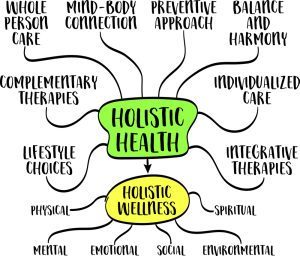 Written by Dr. Sci. Jelena Veličković,
Written by Dr. Sci. Jelena Veličković,
Every year millions of women experience perimenopause as a major biological transition; however, this time is often misinterpreted or regarded with low importance by society and healthcare providers. The cyclical change in estrogen and progesterone levels experienced during this time influences almost all of the major systems in the body, such as temperature regulation, cognition, sleep, and mood changes, and some aspects of cardiovascular and lipid metabolism (Santoro, 2016). Perimenopause is even more unpredictable since body changes occur in varying levels of severity from one month to another. This is a natural biological event, but it is not necessarily an easy or insignificant one since it tends to influence daily living for many women. Taking women’s experiences seriously can make the difference between care that helps and care that dismisses what they are going through.
What is Perimenopause?
Perimenopause is the transitional phase leading up to menopause, experienced between the ages of 40 and 50. However, it can begin earlier or later for some women. During the phase, there is more variability in the levels of estrogen, progesterone, FSH, and LH. This is far more unpredictable than the pre-reproductive phases of estrogen or the phases of estrogen that occur after menopause (Talaulikar, 2022).
Menopause is diagnosed retrospectively after 12 months of amenorrhea, whereas perimenopause is a dynamic process that takes longer between four to ten years with more variability in the pattern of menstruation as well as hormone secretion patterns (Harlow et al., 2012). A Staging of Reproductive Aging Workshop (STAW +10) proposes markers for early or late perimenopause through variations of menstruation pattern length or endocrine features, allowing practitioners to classify women for stages of reproductive aging. This is all related to the physical discomfort that women may go through as their ovaries become less active with the onset of perimenopause. These endocrine changes affect thermoregulation, neurotransmitter activity, circadian rhythms, cardiovascular function, and lipid metabolism.
Physical Symptoms of Perimenopause
Even though every woman’s experience is different, some of the physical symptoms occur at such a high rate that they are clearly documented by research studies. This is what causes the differences in the transition of the perimenopausal woman.
1. Vasomotor Symptoms (Hot Flashes and Night Sweats)
They are frequently listed as the most common symptoms of perimenopause. Women can have them in various ways like getting sudden hot sensations, turning red in the face, experiencing heart palpitations, or having a feeling of warmth radiating over the body. Night sweats could also interfere with the woman’s sleep. This could then result in other issues such as fatigue, irritation, or mood swings, which would then impair one’s work performance since one could feel self-conscious in their work or social setting (Thurston, 2018).
2. Irregular Menstrual Cycles
Changes in the menstrual cycle can be an early sign of perimenopause. Some women experience shorter cycles, more menses, or periods of amenorrhea, whereas some women experience longer cycles or spotting. In later stages, breaks between periods grow, often 60 days or more without a bleed. That shift points to shifting estrogen levels from the ovaries, tied closely to what’s called STRAW+10 (Harlow et al., 2012).
3. Interruption of Restorative Sleep
Most women experience disruption to their natural sleeping patterns; during perimenopause, sleep disruptions occur between 50-60% of the time. It has been found that these sleep disturbances may exacerbate anxiety and contribute to increased levels of mood fluctuation. Contributing factors to these sleep disturbances include: hot flashes, night sweats, body rhythm changes, anxiety, and disturbed sleeping patterns (Kravitz & Joffe, 2021). The poor sleep quality associated with these factors increases irritability, difficulty with cognitive function, and stress reaction, and can create additional challenges for women who were already vulnerable to poor quality sleeping patterns before menopause occurred.
4. Musculoskeletal Pain
Muscle and joint issues, like tightness, soreness, or general aches, are often linked to perimenopause today. Studies found about 7 out of 10 women go through this (Lu et al., 2020). Newer findings point to what’s called a “menopause-related musculoskeletal pattern,” involving weaker muscles, thinner bones, plus greater chances of developing joint wear (Wright et al., 2024).
5. Urogenital and Sexual Changes
A drop in the levels of estrogen causes related signs and symptoms that affect the tissues of the vagina, vulva, bladder, or urethra. Some of the signs include dryness, irritation, painful sexual intercourse, or more frequent urination. These signs are related to low levels of estrogen in the area; collectively, they are referred to as the genitourinary syndrome of menopause (GSM). These signs affect sexual health, self-confidence, and daily functioning (The North American Menopause Society, 2020). Some of the signs may also be linked with other gynecologic conditions, such as uterine fibroids, painful or irregular bleeding or pressure in the pelvis.
These somatic complaints indicate real physiological phenomena, as opposed to psychological attribution, which further verifies the need for experience verification of women in such a transition.
Cognitive and Emotional Changes During Perimenopause
The hormonal changes in perimenopause affect memory, mood, and stress responses. These cognitive and emotional changes often come out of the blue and may fluctuate from month to month.
1. Cognitive Fog and Attention Difficulties
Women frequently face “brain fog” symptoms during the peri-menopause phase. These issues can include poor focus or inability to concentrate, difficulty organizing their ideas, and a feeling of having too many simultaneous thoughts; problems with effective communication, notable barrier to completing multiple tasks simultaneously, and inability to easily find or recall appropriate words when talking about something to a third party. Current research indicates that women’s cognitive difficulties during this stage of their lives are due to small disruptions in both attention and short-term memory rather than an actual cognitive disability of the brain (Greendale et al., 2009). Consequently, when women’s cognitive difficulties interfere with appropriate functioning in their daily activities or with the demands of their job, women may develop feelings of anxiety and doubt about their cognitive abilities.
2. Mood Swings
Estradiol influences neurotransmitters such as serotonin, dopamine, and norepinephrine which play a part in how we feel emotionally about ourselves. When estrogen levels fluctuate, mood may fluctuate, which can lead to increased feelings of agitation, depression and anxiousness or intensity of response to external pressure. Also, some women that had previously been able to cope with their emotions may experience rapid changes in their mood that do not coincide with their current situation (Han et al., 2023).
3. Anxiety and Emotional Reactivity
Alteration in the HPA (hypothalamic-pituitary-adrenal) axis may cause worsening of anxiety symptoms by increasing the recognition of agitation, anxiety and emotional reactivity. For example, an increase in these feelings may develop in women that had previously never experienced the feelings of anxiety prior to going through the menopause transition. The likelihood of developing these vulnerabilities can also be exacerbated by both poor sleep quality and the added stress of day-to-day living (Han et al., 2023).
4. Increased Vulnerability to Stress
Life’s hectic years sometimes line up with perimenopause. Many women balance jobs, kids’ needs, helping older relatives, or dealing with personal health stuff. Hormone shifts during this phase can amplify tension – making it tougher to cope, no matter how steady daily pressures stay. Knowing these reactions come from physical changes helps ease guilt. It opens space for gentler, kinder choices when tending to your well-being.
These mood and cognitive shifts are real and biologically based. They demonstrate the importance of support in all contexts – at home, at work, and in healthcare facilities.
How Perimenopause Affects Daily Life and Relationships
Women can face mood swings and exhaustion during perimenopause despite being responsible for work, family, and other obligations. With fluctuating symptoms, simple activities become hard to cope with. While a woman may have phases where she feels competent to deal with her responsibilities, she may experience phases of feeling emotionally or physically overwhelmed, which can influence her self-confidence. Poor sleep and sudden hot flashes can worsen her level of concentration and patience. A study among middle-aged women portrays a picture where women dealing with severe vasomotor symptoms or anxiety often experience greater difficulty with daily activities and social interactions as well as social encounters. At work, some women may become distant or less engaged in activities because she remains uncertain if others will see her as inconsistent in her roles. With her relationships, a woman with perimenopause symptoms can be perceived as impatient or distant emotionally rather than being exhausted because of hormones, which can become a common issue if misunderstood. Research suggests doctors and nurses can help with such relationships by making emotions sound more common, describing symptoms, or admitting reactions to stressful situations. Speaking freely without shame and developing methods to cope with stressful situations can make a huge impact in making coping with symptoms a less complicated situation without disturbing emotions and everyday life skills (Avis et al., 2009).
Barriers to Seeking Support
Even though many of women go through perimenopause signs, plenty wait before getting help. They often link those changes to pressure, getting older, or feeling like they’re not doing enough, instead of seeing them as part of shifting hormones, which means care might come late. Shame about growing older, fear doctors won’t take them seriously, and habits that tell women to tough it out can make things harder to talk about. If someone’s working full-time or looking after others, admitting struggle might feel risky, as if it shows they can’t handle their duties. These hurdles might leave women feeling alone during perimenopause, despite how widespread and medically acknowledged the signs are. More awareness, open conversations, and supportive healthcare can make women feel safe to seek help sooner.
How to Provide Support to Women During Perimenopause
Supporting someone through perimenopause means listening carefully, remaining patient, and exploring how physical changes may correlate with changes in emotional state, relationships or stress levels. Many women who are experiencing this phase of life may also be working and taking care of others or attempting to live up to their own expectations; the combination of these factors increases the likelihood of experiencing greater symptoms. The support provided can be of tremendous value when life becomes overwhelming.
1. Listen Without Minimizing
Women often say they’re brushed off when talking about perimenopause. Comments like “we all go through this” or “that’s just getting older” might downplay real struggles. But paying close attention, repeating what you hear, and treating their feelings as valid builds trust. When people feel heard, it lessens guilt and makes them more likely to share openly.
2. Encourage Symptom Tracking
Tracking symptoms can give a greater sense of control and clarity. Using a symptom diary or a mobile app enables the user to identify potential triggers for these symptoms and track any cyclical patterns associated with them and, consequently, help the user effectively communicate with their doctor about their concerns. The act of tracking symptoms also assists women in becoming more aware of their own bodies and help them collaboratively make decisions together with their healthcare providers.
3. Support Sleep Hygiene
Sleep disruption is one of the most challenging aspects of perimenopause, affecting emotional stability, concentration, and overall functioning. Supportive measures that can improve sleep quality include:
- maintaining a consistent bedtime and wake time
- practicing relaxation strategies before bed
- minimizing caffeine and alcohol in the evening
- reducing screen exposure before sleep
- keeping the bedroom cool to offset night sweats
- choosing breathable fabrics or menopause friendly bedding
Sticking to a regular schedule, cutting back on things that keep you up, or tweaking your bedroom setup often helps. Once rest gets better, lots of women notice sharper focus, feeling more even-keeled, and handling everyday challenges with less struggle.
4. Foster Healthy Lifestyle Habits
Lifestyle changes can ease symptoms and enhance overall well-being. Staying active helps control body temperature, lifts mood, also keeps muscles and joints strong. Practices like yoga or tai chi, along with meditation and slow breathing, can reduce stress and support better emotional balance. Eating whole foods, drinking enough water, eating at steady times can also help balance energy levels and reduce physical discomfort. Even though daily habits won’t eliminate symptoms completely, studies show that they can bring noticeable improvements for many women (Innes et al., 2010; Nguyen et al., 2020; Khan et al., 2023).
5. Promote Shared Understanding in Relationships
Spouses, kids, or relatives might see mood shifts or low stamina as personal issues instead of signs tied to hormonal changes. Getting loved ones informed about perimenopause can reduce blame, improve communication, and create a more supportive home. Once they understand the hormonal cause they are more like to respond with patience and empathy instead of frustration.
6. Encourage Medical Evaluation When Needed
Even though perimenopause is a natural life stage, certain symptoms require medical evaluation:
- heavy or prolonged bleeding
- significant mood changes
- persistent pain
- functional impairment
To find out what else might be wrong, a medical professional may perform blood tests, such as checking thyroid, estradiol, FSH, LH, or metabolism.
When to Refer for Clinical Care or Specialized Support
Healthcare professionals should encourage referral when:
- Symptoms seriously interfere with day-to-day functioning
- Bleeding patterns point to endometrial pathology
- Mood symptoms point to depression or anxiety
- Cognitive changes are severe or progressive
- Vasomotor symptoms disrupt sleep and quality of life
Evidence-based interventions include menopausal hormone therapy, cognitive-behavioral therapies for menopausal symptoms, non-hormonal medications, lifestyle strategies, and integrative health approaches (The North American Menopause Society, 2023).
Improving Quality of Life for Women Living with Perimenopause
Since hormone fluctuations vary from person to person perimenopause hits each woman differently. Daily routines, stress, and environment also influence how symptoms show up. Understanding what’s happening in the body helps, but noticing changes in focus, mood, or energy is just as important. Support from loved ones works best when it comes from listening rather than assumptions.
This phase is about more than hormones alone. It affects the body, emotions, and mental well-being, shaping daily life and relationships. When guidance is based on reliable information instead of myths, women can manage symptoms more confidently. Feeling heard, respected, and gently supported plays a key role in maintaining quality of life.
Author Bio
Dr. Sci. Jelena Veličković is a molecular biologist and geneticist specializing in medical and forensic genetics. With over ten years of experience in clinical diagnostics and academic research, she has authored peer-reviewed studies in prenatal genetics, thrombophilia, oncogenetics, and molecular biology. Her work spans international research centers and clinical laboratories, where she has advanced molecular diagnostic methods including PCR microbiology, liquid biopsy, and NGS analysis. She is committed to applying evidence-based genetic insights to enhance diagnostic accuracy and support clinical decision-making.
References:
Avis, N. E., Colvin, A., Bromberger, J. T., Hess, R., Matthews, K. A., Ory, M., & Schocken, M. (2009).
Change in health-related quality of life over the menopausal transition in a multiethnic cohort of middle-aged women: The Study of Women’s Health Across the Nation. Menopause, 16(5), 860–869.
https://pmc.ncbi.nlm.nih.gov/articles/PMC2743857/
Greendale, G. A., Huang, M. H., Wight, R. G., Seeman, T., Luetters, C., Avis, N. E., & Karlamangla, A. S. (2009).
Effects of the menopause transition and hormone use on cognitive performance in midlife women. Neurology, 75(21), 1888–1896.
https://pubmed.ncbi.nlm.nih.gov/19470968/
Han, Y., Zhang, Y., Li, X., & Wang, L. (2023).
Neuroendocrine pathogenesis of perimenopausal depression. Frontiers in Psychiatry, 14, 1162501.
https://www.frontiersin.org/journals/psychiatry/articles/10.3389/fpsyt.2023.1162501/full
Harlow, S. D., Gass, M., Hall, J. E., Lobo, R. A., Maki, P., Rebar, R. W., … & the STRAW+10 Collaborative Group. (2012).
Executive summary of the Stages of Reproductive Aging Workshop +10: Addressing the unfinished agenda of staging reproductive aging. Menopause, 19(4), 387–395.
https://pmc.ncbi.nlm.nih.gov/articles/PMC3340903/
Innes, K. E., Selfe, T. K., & Vishnu, A. (2010).
Mind–body therapies for menopausal symptoms: A systematic review. Maturitas, 66(2), 135–149.
https://pmc.ncbi.nlm.nih.gov/articles/PMC3031101/
Khan, S. J., Kapoor, E., Faubion, S. S., & Kling, J. M. (2023).
Vasomotor symptoms during menopause: A practical guide on current treatments and future perspectives. International Journal of Women’s Health, 15, 273–287.
https://pmc.ncbi.nlm.nih.gov/articles/PMC9938702/
Kravitz, H. M., & Joffe, H. (2011).
Sleep during the perimenopause: A SWAN story. Obstetrics and Gynecology Clinics of North America, 38(3), 567–578.
https://pmc.ncbi.nlm.nih.gov/articles/PMC3185248/
Lu, C., Liu, P., Zhou, Y., Meng, F., Qiao, T., Yang, X., Li, X., Xue, Q., Xu, H., Liu, Y., Han, Y., & Zhang, Y. (2020).
Musculoskeletal pain during the menopausal transition: A systematic review and meta-analysis. Neural Plasticity, 2020, Article 8842110.
https://pmc.ncbi.nlm.nih.gov/articles/PMC7710408/
Nguyen, T. M., Do, T. T. T., Tran, T. N., & Kim, J. H. (2020).
Exercise and quality of life in women with menopausal symptoms: A systematic review and meta-analysis of randomized controlled trials. International Journal of Environmental Research and Public Health, 17(19), 7049.
https://www.mdpi.com/1660-4601/17/19/7049
Santoro, N. (2016).
Perimenopause: From research to practice. Journal of Women’s Health, 25(4), 332–339.
https://pmc.ncbi.nlm.nih.gov/articles/PMC4834516/
Talaulikar, V. S. (2022).
Menopause transition: Physiology and symptoms. Best Practice & Research Clinical Obstetrics & Gynaecology, 81, 22–36.
https://pubmed.ncbi.nlm.nih.gov/35382992/
The North American Menopause Society. (2020).
The 2020 genitourinary syndrome of menopause position statement. Menopause, 27(9), 976–992.
https://pubmed.ncbi.nlm.nih.gov/32852449/
The North American Menopause Society. (2023).
The 2023 nonhormone therapy position statement of The North American Menopause Society. Menopause, 30(6), 573–590.
https://pubmed.ncbi.nlm.nih.gov/32852449/
Thurston, R. C., & Joffe, H. (2018).
Vasomotor symptoms and menopause: Findings from the Study of Women’s Health Across the Nation. Obstetrics and Gynecology Clinics of North America, 45(4), 535–552.
https://pubmed.ncbi.nlm.nih.gov/29390899/
Williams, R. E., Kalilani, L., DiBenedetti, D. B., Zhou, X., & Fehnel, S. E. (2009).
Health-related quality of life and menopausal transition: Observations from the WOMAN study. Maturitas, 62(2), 153–159.
https://pubmed.ncbi.nlm.nih.gov/19157732/
Additional References
Cleveland Clinic. Perimenopause Overview. Access here
Healthline. Perimenopause: Feeling Like “I’m Dying”? Access here
Ohio State University Wexner Medical Center. Why Perimenopause Affects Your Mood. Access here
American Society for Reproductive Medicine. Menopausal Transition: What Is It? Access here
Please also review AIHCP’s Health Care Manager Certification program and see if it meets your academic and professional goals. These programs are online and independent study and open to qualified professionals seeking a four year certification

 Written by Dr. Jane Smith, MD
Written by Dr. Jane Smith, MD Written by Halley Jones.
Written by Halley Jones. Written by Jeremy Carter.
Written by Jeremy Carter.
















